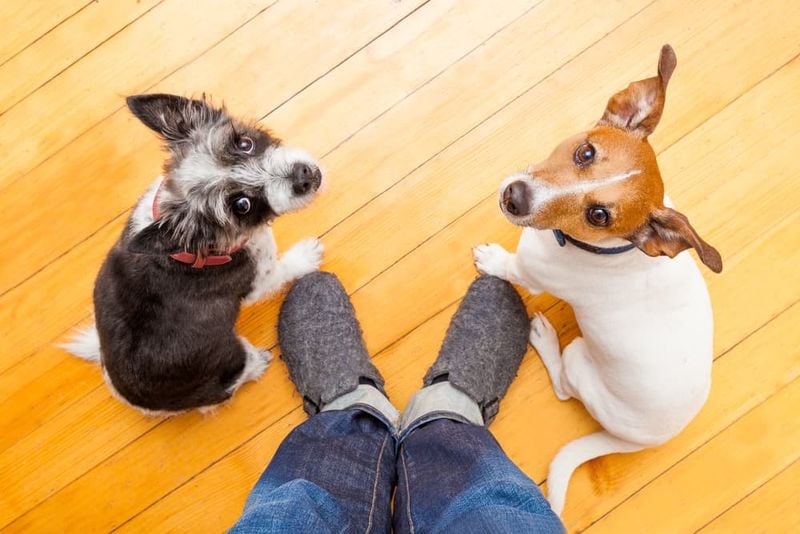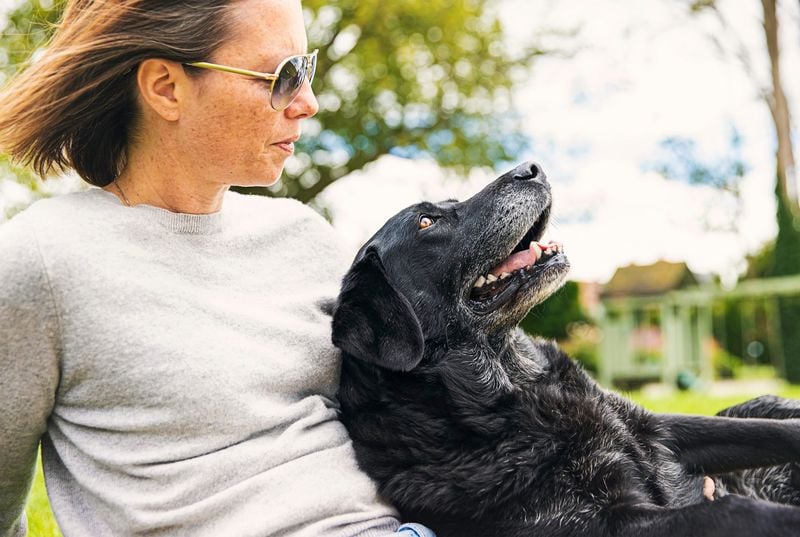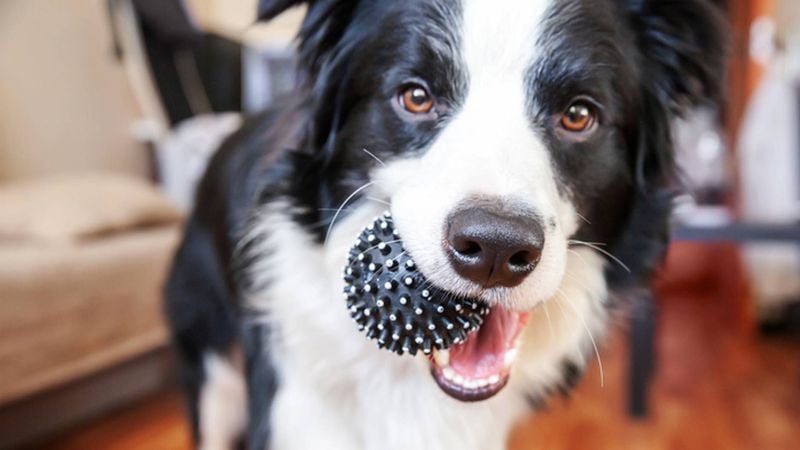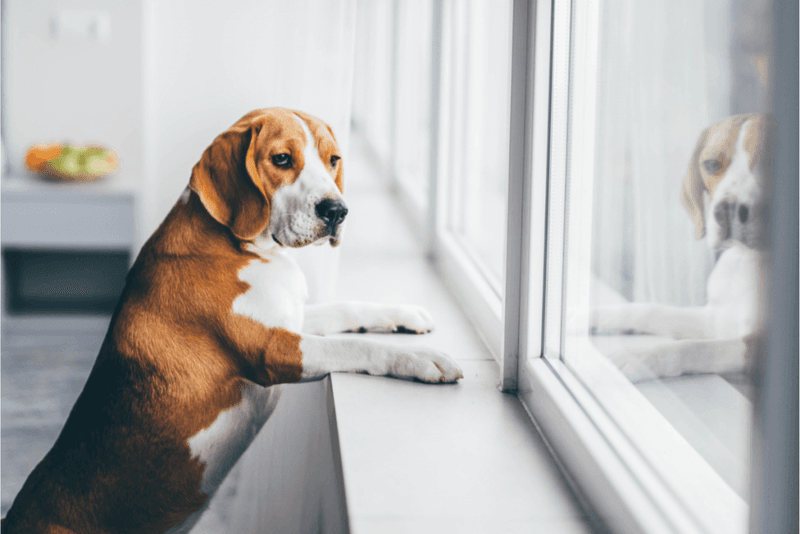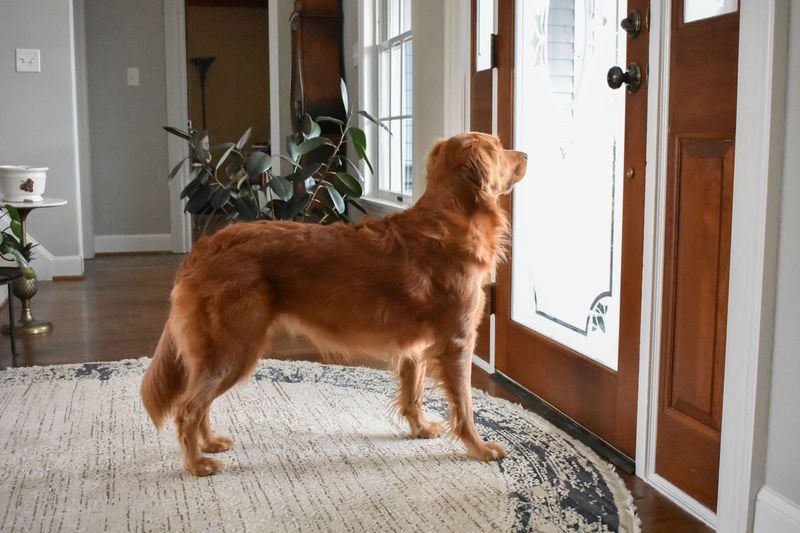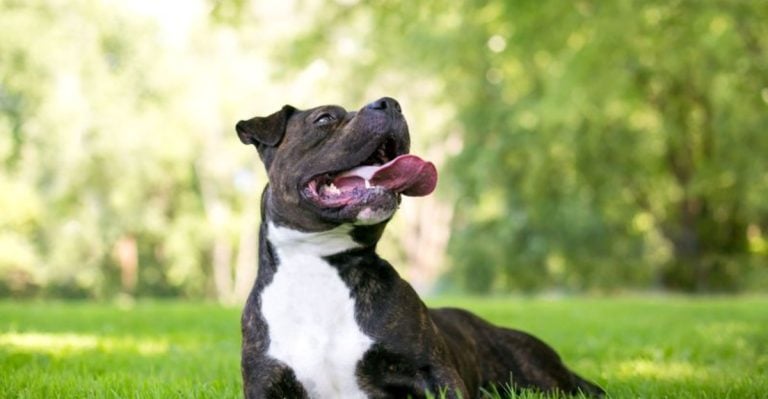13 Quiet Cries for Help: Subtle Ways Your Dog Is Saying ‘I Need You’
Our furry friends can’t speak human language, but they’re constantly communicating with us through their actions. Dogs have evolved alongside humans for thousands of years, developing unique ways to express their needs, fears, and affections.
When your four-legged companion is struggling or needs extra attention, they often show subtle signs that are easy to miss. Learning to recognize these quiet pleas for help can strengthen your bond and ensure you’re meeting your dog’s emotional and physical needs.
1. Excessive Licking Won’t Quit

That rhythmic lapping sound might be more than just grooming. Dogs often lick themselves, you, or even furniture when feeling anxious, in pain, or seeking attention. The repetitive motion releases calming endorphins in their brain.
If your pup suddenly starts licking excessively, they might be trying to self-soothe. Check for any skin irritations or injuries first. When physical causes are ruled out, consider recent changes in their environment that might be causing stress.
A good rule of thumb: occasional licking is normal, but when it becomes obsessive or creates bald spots, your dog is waving a red flag that something’s wrong.
2. Your Canine Shadow Appears
Remember when you could go to the bathroom alone? Those days vanish when your dog becomes your furry shadow. This constant following from room to room isn’t just clingy behavior – it’s often a sign they’re feeling insecure or anxious.
Dogs are pack animals by nature. When something disrupts their sense of security, they stick close to their trusted human. Recent changes like moving homes, new family members, or even rearranged furniture can trigger this behavior.
Rather than scolding them, create safe spaces throughout your home where they can relax while still keeping you in sight.
3. Soft Whimpers Speak Volumes
Those gentle whines might seem like nothing, but your dog is actually trying to start a conversation. Soft vocalizations are their way of expressing discomfort, anxiety, or simply wanting your attention when barking seems too extreme.
Pay attention to the context. Is your pup whining while looking at their water bowl? Near the door? Or perhaps while lying down? Each situation tells a different story about their needs.
Unlike demanding barks, these subtle sounds are easy to ignore. Try to note when they occur and what happens before and after. You’ll soon decode this important part of your dog’s communication style.
4. Body Pressure Reveals Hidden Anxiety
When your dog leans or presses against you with their body weight, they’re not just being affectionate. This pressure-seeking behavior often signals anxiety or insecurity. The physical contact provides comfort similar to how weighted blankets calm humans.
During thunderstorms, fireworks, or unfamiliar situations, you might notice this behavior intensify. Your dog is essentially using you as their emotional support human. The pressure against your body helps regulate their nervous system.
Instead of pushing them away, acknowledge their need for security. A gentle pat and calm presence can reassure them that you’ve got their back – literally and figuratively.
5. The Unblinking Gaze Asks Questions
Those soulful eyes fixed on your every move aren’t just admiration – they’re communication. Intense staring is your dog’s way of trying to understand what you’re thinking or planning next. It can indicate they need something specific like food, a potty break, or playtime.
Watch for accompanying signals like head tilts or ear movements. These subtle cues add context to their stare. If the gaze comes with panting or stiffness, your dog might be feeling anxious rather than curious.
Try responding with a calm “What do you need?” and observe their reaction. Many dogs will lead you to what they want once they have your attention.
6. Toy Offerings Signal Connection Needs
When your dog drops their slobbery tennis ball in your lap for the fifteenth time, they’re not just bored. Bringing toys to you is their way of saying, “Let’s connect!” This behavior goes beyond simple play-seeking – it’s an invitation to bond.
Dogs are social learners who value shared experiences. By involving you with their favorite objects, they’re creating opportunities for mutual joy. Notice which toys they bring most often and when this behavior increases.
If your normally independent dog suddenly starts bringing toys more frequently, they might be feeling neglected or anxious about changes in the household routine. This simple gesture deserves your attention.
7. Mirrored Yawns Show Emotional Attunement
Ever notice your dog yawning right after you do? This mirroring isn’t coincidence – it’s a fascinating sign of emotional connection. Dogs who yawn when you yawn are demonstrating empathy and attunement to your emotional state.
Research suggests this contagious yawning happens more often between dogs and humans who share strong bonds. However, yawning can also indicate stress or anxiety in dogs. Context matters here.
If your dog yawns during training, at the vet, or in new environments, they’re likely communicating discomfort rather than mirroring. Learning to distinguish between these different types of yawns helps you respond appropriately to your dog’s emotional needs.
8. Destructive Behavior Signals Distress
Finding your favorite shoes chewed to pieces isn’t your dog’s revenge for leaving them alone. Sudden destructive behavior often signals serious emotional distress. Your normally well-behaved companion isn’t becoming rebellious – they’re crying out for help.
Anxiety, boredom, or fear can trigger destructive tendencies. The physical activity of chewing or digging releases tension and provides comfort when they’re overwhelmed. Check for changes in routine, new household members, or different living arrangements.
Instead of punishment, increase exercise, mental stimulation, and comfort. Consider crate training or puzzle toys for alone time. If the behavior persists, consult your vet about possible separation anxiety.
9. Restless Pacing Reveals Inner Turmoil
That endless back-and-forth movement isn’t just excess energy. When your dog paces or seems unable to settle, they’re displaying a classic sign of anxiety or discomfort. Like humans who pace when worried, dogs use movement to cope with stress.
Medical issues like pain, cognitive dysfunction in older dogs, or urgent bathroom needs can trigger pacing. Environmental stressors such as thunderstorms, construction noise, or unfamiliar visitors might also be culprits. The rhythmic movement helps them process their emotions.
Create a quiet space where your dog can retreat when overwhelmed. If pacing becomes frequent or intense, consult your veterinarian to rule out pain or neurological issues.
10. Mealtime Rejection During Separation
When your typically food-motivated pup suddenly ignores meals during your absence, they’re sending a powerful message. Loss of appetite specifically when you’re gone indicates separation distress rather than picky eating habits.
Dogs form intense bonds with their humans. For some, the stress of separation overrides even basic hunger drives. Watch for patterns – does your dog eagerly eat when you’re present but leave food untouched when alone? This selective appetite loss speaks volumes.
Try feeding high-value treats before departures or using puzzle feeders to create positive associations. Gradual desensitization to your leaving routine can help ease their anxiety and restore healthy eating patterns.
11. Clothing Cuddles Show Attachment Needs
Finding your dog curled up on your laundry pile isn’t just about comfortable fabric. When dogs seek out your worn clothes, they’re surrounding themselves with your scent for comfort and security. This behavior reveals deep attachment and possibly some separation anxiety.
Your scent is powerfully reassuring to your dog. Studies show that the smell of a familiar human can activate the same pleasure centers in a dog’s brain as physical presence. During times of stress or change, this scent-seeking behavior often increases.
Consider leaving a recently worn (unwashed) t-shirt in their bed when you must be away. This simple gesture provides emotional comfort during your absence.
12. Tail Signals Telegraph Fear
A tucked tail isn’t just a casual body position – it’s your dog’s distress flag. When your dog’s normally expressive tail disappears between their legs or trembles uncontrollably, they’re experiencing significant fear or anxiety.
The tail is one of your dog’s primary communication tools. Tucking protects vulnerable body parts and signals submission, essentially saying, “I feel threatened.” Trembling indicates their nervous system is in overdrive from stress hormones.
Look for triggers: loud noises, unfamiliar people, other animals, or even certain locations. Creating distance from these stressors helps your dog regain confidence. Never force a fearful dog into scary situations – this only deepens their anxiety.
13. Door Vigilance Reveals Attachment Struggles
That patient sentinel by the door isn’t just being loyal. When your dog spends hours waiting by the entrance, they’re displaying signs of separation anxiety or over-attachment. This vigilant behavior shows they’re struggling with your absence.
Dogs are social creatures who form intense bonds with their humans. For some, being separated feels genuinely distressing. The door represents the boundary between togetherness and isolation. Their persistent waiting indicates they’re having trouble processing your departure.
Gradually teaching independence through positive reinforcement helps ease this anxiety. Create engaging activities away from the door and reward relaxed behavior in other areas of your home.

